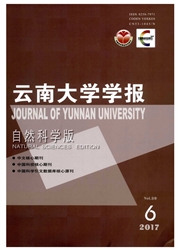

 中文摘要:
中文摘要:
利用欧洲中期数值天气预报中心的ERA-40逐日再分析资料,计算得到350 K等熵面上45年冬季气候平均位势高度场,再利用Butterworth滤波器得到等熵面上位势高度30~60 d低频波.应用经验正交分解(EOF)对冬季350 K等熵面上的低频位势高度场进行时空分析,结果表明:在第1主分量场上,空间分布特征最明显的是南极涛动(AAO)、北极涛动(AO)、北美-太平洋涛动(PNA)以及经向偶极型低频变化.这种空间分布形式说明在350 K等熵面上南北半球间通过太平洋地区的经向低频波列传播,使得AAO与AO相互影响,相互作用.第2主分量场上,空间分布特征则表现出全球经向和纬向上的低频波列特征,以及南北半球在大西洋地区的相互作用.将EOF分解得到的前2个主分量场的时间系数投影到1957—2002年冬季的时间序列中,发现冬季全球大气低频振荡在20世纪70年代末80年代初发生了明显的年代际突变,并在80年代末以后逐渐加强.说明在80年代末以后冬季南北半球的低频变化相互作用有所加强,也说明太平洋,大西洋上的经向传播特征更为明显.
 英文摘要:
英文摘要:
Based on the ERA-40 of the ECMWF daily data from 1957 to 2002,the band-pass filter and empirical orthogonal function(EOF) are implemented to investigate the 315 K geopotential height in isentropic surface under the climatological mean.The first EOF model shows that the Arctic Oscillation(AO),the Antarctic Oscillation(AAO),and Pacific-North American(PNA) Teleconnection Pattern are the most distinct characters of the global low frequency oscillation.In this model,the interaction between AAO and AO is realized by meridional propagation of the intraseasonal oscillation(ISO) in the pacific.The second model shows that the characteristic of meridional and zonal propagation of ISO in the earth.In this model,the interaction between northern and southern hemispheric atmosphere is happened in Atlantic.When projected the EOF models on the time serials from 1957 to 2002 years,the result shows that the interdecadal variability of ISO is happened between the late 1970s and early 1980s,and gradually enhanced since the late 1980s.
 同期刊论文项目
同期刊论文项目
 同项目期刊论文
同项目期刊论文
 Assessing the Seasonal Predictability of Summer Precipitation over the Huaihe River Basin with Multi
Assessing the Seasonal Predictability of Summer Precipitation over the Huaihe River Basin with Multi Evaluation of summer temperature and precipitation predictions from NCEP CFSv2 retrospective forecas
Evaluation of summer temperature and precipitation predictions from NCEP CFSv2 retrospective forecas The Influence of Sulfur Dioxide on Dobson Spectrophotometer Total Ozone Measurement: Analysis on the
The Influence of Sulfur Dioxide on Dobson Spectrophotometer Total Ozone Measurement: Analysis on the Changes in Stratospheric ClO and HC Concentrations under Different Greenhouse Gas Emission Scenarios
Changes in Stratospheric ClO and HC Concentrations under Different Greenhouse Gas Emission Scenarios Application of a Coupled Land Surface-Hydrological Model to Flood Simulation in the Huaihe River Bas
Application of a Coupled Land Surface-Hydrological Model to Flood Simulation in the Huaihe River Bas 期刊信息
期刊信息
